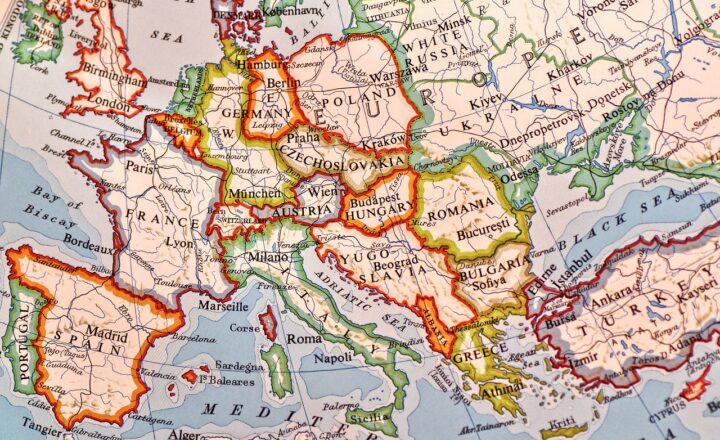Top 10 Most Bizarre Modes of Transportation from Around the World
November 11, 2024

Transportation is a fundamental aspect of everyday life across the globe. While most people rely on conventional methods, such as cars, trains, and planes, some regions have developed peculiar and intriguing modes of getting from one place to another. These unique transportation styles not only reflect the culture and creativity of the people but also showcase the challenges faced in different environments. Join us as we take a fun-filled journey to discover the top 10 most bizarre modes of transportation from around the world.
1. The Shanks’ Pony – Walking as Transport
Often dismissed as too simple, walking is one of the most ancient and basic forms of transport. Yet, in many cultures, especially in rural areas, it remains a practical and vital option for getting around.
For example, in Nepal, hikers trek for days through tough terrain to reach remote villages, while in many African countries, communities walk long distances to access water or markets. This mode of transport insists on the necessity of a sustainable and simple way of life, connecting humanity to the land.
2. The Ice Road – Transporting Goods on Frozen Surfaces
During winter months, some northern regions rely on ice roads formed on frozen lakes and rivers to transport goods. This technique is prominently used in Canada and other Arctic communities.
Farmers and indigenous communities often navigate these icy pathways using trucks or sleds. While this mode of transport exploits the natural environment, its precariousness introduces risks as warm temperatures threaten the integrity of the ice.
3. The Dog Sled – Speeding Through Snowy Landscapes
In regions like Alaska and parts of Greenland, dog sledding is more than just a sport; it’s a traditional method used by indigenous communities for hunting and transport.
Teams of expertly-trained dogs pull sleds over snow-covered landscapes, allowing for rapid travel in areas that would otherwise be inaccessible. This age-old practice honors the bond between humans and dogs, forming a unique relationship viewed by many as the epitome of adventure.
4. The Boda Boda – Motorcycle Taxis in East Africa
Boda bodas, or motorcycle taxis, are a popular yet informal means of transportation in East African countries like Uganda and Kenya. Riders use their motorcycles to transport passengers and goods across tumultuous traffic and rugged terrain.
These motorcycle taxis reflect the fast-paced nature of city life but also raise safety concerns, making them a bizarre yet fascinating mode of transport in urban areas.
5. The Tuk-Tuk – The Tri-Wheeled Wonder
Tuk-tuks are auto-rickshaws predominantly found in countries like Thailand and India. These small three-wheeled vehicles offer a quirky and maneuverable transport solution in bustling cities with narrow streets.
Tuk-tuks combine culture, fun, and practicality, often adorned with vibrant colors and designs that represent local heritage. They provide tourists with an exhilarating ride while showcasing the local architecture and lifestyle.
6. The Cable Car – Floating Above Traffic
In cities with challenging geographical features, such as steep hills or rivers, cable cars provide an adventurous solution for transportation. Notable examples include the iconic San Francisco cable cars and Medellín, Colombia’s cable car system, which connects impoverished hillside communities to the city.
These aerial transport systems also serve as tourist attractions and provide stunning views of the surrounding areas. Rider’s experiences blend practicality with a touch of exhilaration as they float above everyday traffic.
7. The Monorail – The Train that Defies Gravity
Monorails use a single track and are seen in cities like Tokyo and Mumbai. While they offer efficient transport solutions, their unique structure and appearance offer a futuristic aesthetic.
Monorails are often used at theme parks and airports, providing fast transit without disrupting urban landscapes. The engineering behind these modes of transport stirs fascination and curiosity among urban planners and transportation enthusiasts.
8. The Bathtub Boat – A Quirky Fishing Method
In some coastal regions around the world, you might encounter the infamous bathtub boat, which is a handmade vessel crafted from old bathtubs. These eclectic boats are often used by fishermen seeking local catch or by children playing on water.
Such vessels may not be suitable for deep-sea fishing, but they showcase the creativity and resourcefulness of individuals in coastal communities, proving that transportation doesn’t always require high-tech solutions.
9. The Ferry – Island Hopping on Water
Ferries are a common sight in regions with many islands, allowing islanders to travel between their home and the mainland, as well as ferry diving tourists between islands. Places like the Greek islands and parts of Indonesia rely heavily on ferries for transport.
While ferries may seem standard, the range of vessel designs—ranging from large cargo ferries to small, brightly colored traditional boats—adds a unique aesthetic and cultural character to island travel.
10. The Hovercraft – Skimming Over Land and Water
Hovercraft are a fascinating combination of land and water vehicles that can carry passengers over both terrain and water. Commonly used in places like the UK and the US, hovercraft glide effortlessly over surfaces, using a cushion of air for lift.
Though primarily used for special applications, hovercraft continue to intrigue both enthusiasts and the general public due to their unique functionality and design.
Conclusion
As we’ve explored these bizarre modes of transportation, it’s clear that human ingenuity knows no bounds. Each method tells a story of adaptation and creativity, offering insights into the cultures and environments they arise from. Whether it’s the simplicity of walking or the thrill of dog sledding, these unconventional transport modes remind us to appreciate the diversity of travel experiences that exist around the world. So, next time you think about how to get from point A to point B, consider embracing the unconventional—it might lead to an adventure you never expected!







